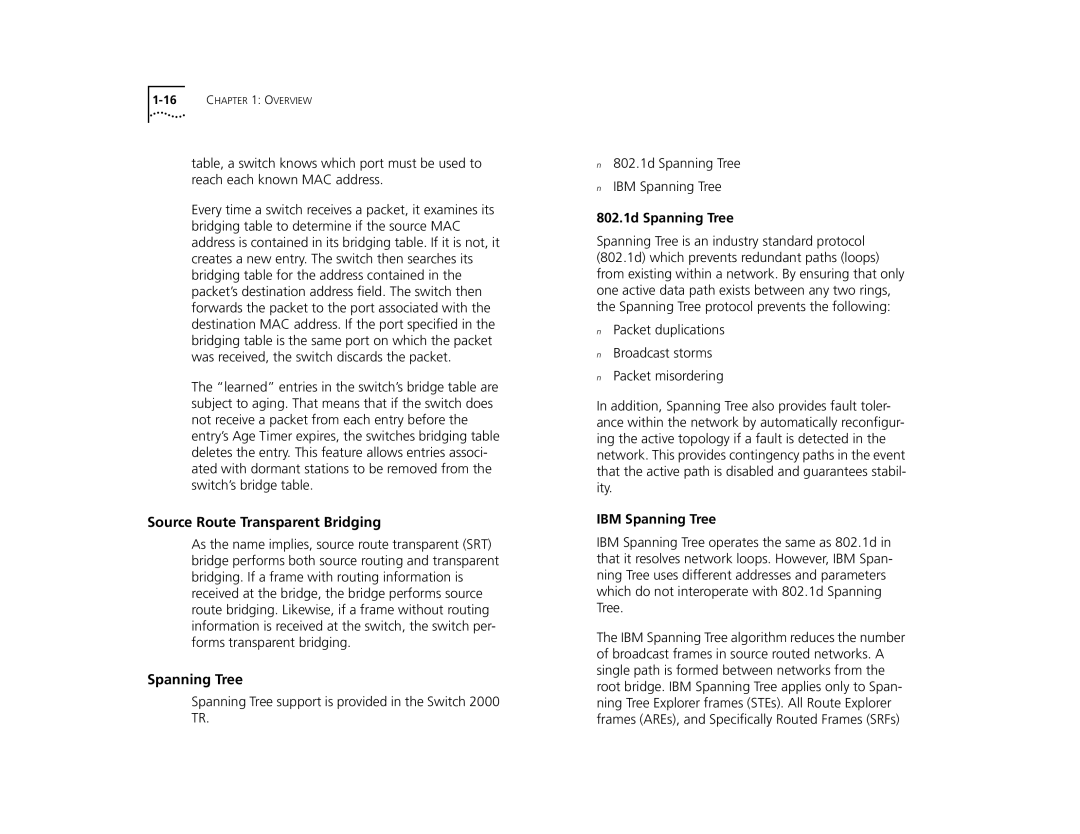table, a switch knows which port must be used to reach each known MAC address.
Every time a switch receives a packet, it examines its bridging table to determine if the source MAC address is contained in its bridging table. If it is not, it creates a new entry. The switch then searches its bridging table for the address contained in the packet’s destination address field. The switch then forwards the packet to the port associated with the destination MAC address. If the port specified in the bridging table is the same port on which the packet was received, the switch discards the packet.
The “learned” entries in the switch’s bridge table are subject to aging. That means that if the switch does not receive a packet from each entry before the entry’s Age Timer expires, the switches bridging table deletes the entry. This feature allows entries associ- ated with dormant stations to be removed from the switch’s bridge table.
Source Route Transparent Bridging
As the name implies, source route transparent (SRT) bridge performs both source routing and transparent bridging. If a frame with routing information is received at the bridge, the bridge performs source route bridging. Likewise, if a frame without routing information is received at the switch, the switch per- forms transparent bridging.
Spanning Tree
Spanning Tree support is provided in the Switch 2000 TR.
■802.1d Spanning Tree
■IBM Spanning Tree
802.1d Spanning Tree
Spanning Tree is an industry standard protocol (802.1d) which prevents redundant paths (loops) from existing within a network. By ensuring that only one active data path exists between any two rings, the Spanning Tree protocol prevents the following:
■Packet duplications
■Broadcast storms
■Packet misordering
In addition, Spanning Tree also provides fault toler- ance within the network by automatically reconfigur- ing the active topology if a fault is detected in the network. This provides contingency paths in the event that the active path is disabled and guarantees stabil- ity.
IBM Spanning Tree
IBM Spanning Tree operates the same as 802.1d in that it resolves network loops. However, IBM Span- ning Tree uses different addresses and parameters which do not interoperate with 802.1d Spanning Tree.
The IBM Spanning Tree algorithm reduces the number of broadcast frames in source routed networks. A single path is formed between networks from the root bridge. IBM Spanning Tree applies only to Span- ning Tree Explorer frames (STEs). All Route Explorer frames (AREs), and Specifically Routed Frames (SRFs)
